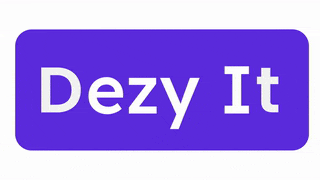Dr. Shahid Munshi on How AI and Smarter Systems Are Reshaping Patient Experience
- Indranil Roy
- Jul 4
- 3 min read
Dr. Shahid Munshi, a seasoned clinician and care leader in Manchester, UK, recently shared his insights on how integrated systems and empathetic design can bridge care gaps for diverse communities. With decades of experience in primary care, mentoring, and team-based care delivery, Dr. Munshi highlighted the evolving landscape of healthcare delivery, especially concerning patient experience through smarter, more efficient systems.
The Patient Experience: Challenges and Solutions
Delivering a smooth patient experience is not always easy. Dr. Munshi pointed out several big challenges he's seen throughout his career:
Communication Problems: There's often a lot of miscommunication between doctors and patients. Patients might not get medical terms, and doctors might not have enough time to explain things clearly. This can lead to confusion and even mistakes.
Time Pressure: Doctors are super busy with lots of patients and paperwork. This means they have less time for meaningful talks with patients, making patients feel rushed or unheard.
Fragmented Systems: Healthcare systems often don't talk to each other. For example, mental health and social care might use different computer systems than medical doctors. This makes it hard to get a full picture of a patient's health and can lead to repeated tests or inconsistent information.
Technology Hurdles: While digital tools like electronic health records are good, they can also be frustrating. Not everyone is good with computers, and poorly designed systems can slow things down and distract from patient care.
Cultural Barriers: In places with many different cultures and languages, like North Manchester where Dr. Munshi works (80 languages spoken!), it's hard to give care that fits everyone's needs. Patients might feel misunderstood if their cultural needs aren't met, or if there's a language barrier.
Emotional Stress: Both patients and doctors can feel a lot of stress. Doctors can get burned out, which affects their ability to give good care.
How AI Can Help
Dr. Munshi sees a lot of ways AI can make things better for both patients and doctors:
Automated Paperwork: AI can transcribe conversations in real-time, summarizing what's said. This means doctors spend less time typing and more time with patients. It also makes records more accurate.
Smarter Scheduling and Billing: AI can help with booking appointments online or through mobile apps, cutting down on long phone queues. It can also help with insurance claims and flagging errors, reducing paperwork for doctors.
Better Data Management: AI can update patient records quickly, giving doctors access to the most current information without spending hours digging through files.
Clinical Decision Support: AI can give doctors real-time information and guidelines, especially for rare conditions. It can summarize consultations and suggest action plans, helping doctors make better decisions.
Health Information Sharing: AI can securely share patient data between different healthcare providers. This means smoother transitions when patients leave the hospital, and doctors get important information faster.
Remote Monitoring: Wearable devices and remote monitoring systems can track patient health data (like blood sugar levels) in real-time. This helps doctors keep an eye on patients at home and adjust care as needed.
Key Takeaways
AI can free up doctors from paperwork, allowing them to spend more quality time with patients.
AI can help personalize treatment plans based on a patient's unique needs and lifestyle.
AI can improve how healthcare resources are used and help with proactive care.
AI can make it easier to diagnose complex cases, especially in diverse populations with different habits and languages.
The Future of AI in Healthcare
While some worry AI might replace doctors, Dr. Munshi believes it will actually make the doctor-patient relationship stronger. By automating tasks like documentation and scheduling, AI gives doctors more time for meaningful interactions. This can also improve doctors' work-life balance and job satisfaction, as they spend less time on boring paperwork and more time helping people.
AI can also help with things like imaging for lung cancer or speeding up stroke diagnoses, where every minute counts. It can tailor care plans to each patient's unique biology and preferences, leading to more personalized treatment.
Ultimately, AI can help with smarter triage, clinical decision support, and predictive analytics. It can summarize consultations, generate referral letters, and analyze large amounts of data to help doctors make quicker, more informed decisions. This means less administrative burden and more face-to-face time with patients.
To learn more about how technology is changing healthcare, visit https://www.dezyit.com.

